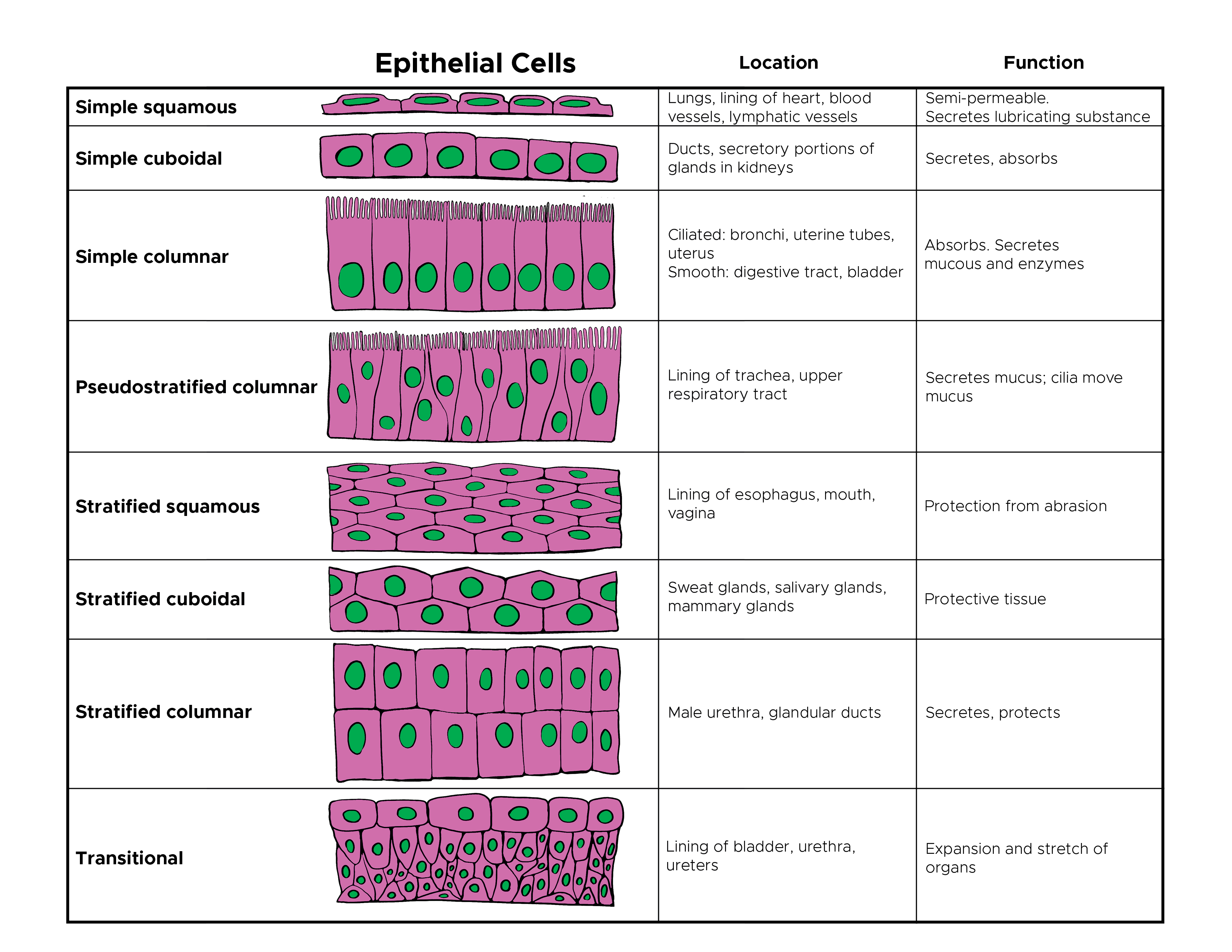[1]
Acloque H,Adams MS,Fishwick K,Bronner-Fraser M,Nieto MA, Epithelial-mesenchymal transitions: the importance of changing cell state in development and disease. The Journal of clinical investigation. 2009 Jun
[PubMed PMID: 19487820]
[2]
Tadeu AM,Horsley V, Epithelial stem cells in adult skin. Current topics in developmental biology. 2014
[PubMed PMID: 24439804]
[3]
Kong S, Zhang YH, Zhang W. Regulation of Intestinal Epithelial Cells Properties and Functions by Amino Acids. BioMed research international. 2018:2018():2819154. doi: 10.1155/2018/2819154. Epub 2018 May 9
[PubMed PMID: 29854738]
[5]
Kalluri R, Weinberg RA. The basics of epithelial-mesenchymal transition. The Journal of clinical investigation. 2009 Jun:119(6):1420-8. doi: 10.1172/JCI39104. Epub
[PubMed PMID: 19487818]
[6]
Pelaseyed T,Bretscher A, Regulation of actin-based apical structures on epithelial cells. Journal of cell science. 2018 Oct 17
[PubMed PMID: 30333133]
[7]
Lange K, Fundamental role of microvilli in the main functions of differentiated cells: Outline of an universal regulating and signaling system at the cell periphery. Journal of cellular physiology. 2011 Apr
[PubMed PMID: 20607764]
[8]
Garcia MA,Nelson WJ,Chavez N, Cell-Cell Junctions Organize Structural and Signaling Networks. Cold Spring Harbor perspectives in biology. 2018 Apr 2;
[PubMed PMID: 28600395]
Level 3 (low-level) evidence
[9]
Bartle EI,Rao TC,Urner TM,Mattheyses AL, Bridging the gap: Super-resolution microscopy of epithelial cell junctions. Tissue barriers. 2018 Jan 2;
[PubMed PMID: 29420122]
[10]
Ikenouchi J, Roles of membrane lipids in the organization of epithelial cells: Old and new problems. Tissue barriers. 2018;
[PubMed PMID: 30156967]
[11]
Karseladze AI, Impairment of vascularization of the surface covering epithelium induces ischemia and promotes malignization: a new hypothesis of a possible mechanism of cancer pathogenesis. Clinical & translational oncology : official publication of the Federation of Spanish Oncology Societies and of the National Cancer Institute of Mexico. 2015 Jun
[PubMed PMID: 25408194]
[12]
Shashikanth N,Yeruva S,Ong MLDM,Odenwald MA,Pavlyuk R,Turner JR, Epithelial Organization: The Gut and Beyond. Comprehensive Physiology. 2017 Sep 12;
[PubMed PMID: 28915334]
[13]
Yee M,Gelein R,Mariani TJ,Lawrence BP,O'Reilly MA, The Oxygen Environment at Birth Specifies the Population of Alveolar Epithelial Stem Cells in the Adult Lung. Stem cells (Dayton, Ohio). 2016 May;
[PubMed PMID: 26891117]
[14]
Wick MR, The hematoxylin and eosin stain in anatomic pathology-An often-neglected focus of quality assurance in the laboratory. Seminars in diagnostic pathology. 2019 Sep;
[PubMed PMID: 31230963]
Level 2 (mid-level) evidence
[16]
Salas PJ,Forteza R,Mashukova A, Multiple roles for keratin intermediate filaments in the regulation of epithelial barrier function and apico-basal polarity. Tissue barriers. 2016 Jul-Sep;
[PubMed PMID: 27583190]
[17]
Kommnick C,Lepper A,Hensel M, Correlative light and scanning electron microscopy (CLSEM) for analysis of bacterial infection of polarized epithelial cells. Scientific reports. 2019 Nov 19
[PubMed PMID: 31745114]
[18]
Syrjänen K,Syrjänen S,Lamberg M,Pyrhönen S,Nuutinen J, Morphological and immunohistochemical evidence suggesting human papillomavirus (HPV) involvement in oral squamous cell carcinogenesis. International journal of oral surgery. 1983 Dec
[PubMed PMID: 6325356]
[19]
Van Itallie CM,Anderson JM, Architecture of tight junctions and principles of molecular composition. Seminars in cell
[PubMed PMID: 25171873]
[20]
Yurchenco PD,Patton BL, Developmental and pathogenic mechanisms of basement membrane assembly. Current pharmaceutical design. 2009;
[PubMed PMID: 19355968]
[21]
Torre LA,Bray F,Siegel RL,Ferlay J,Lortet-Tieulent J,Jemal A, Global cancer statistics, 2012. CA: a cancer journal for clinicians. 2015 Mar;
[PubMed PMID: 25651787]
[22]
Reid BL,Blackwell PM, PHYSIOLOGICAL METAPLASIA ON THE HUMAN CERVIX UTERI. SOME HISTO- AND CYTO-CHEMICAL OBSERVATIONS. The Australian
[PubMed PMID: 14173825]
[25]
Yang J,Antin P,Berx G,Blanpain C,Brabletz T,Bronner M,Campbell K,Cano A,Casanova J,Christofori G,Dedhar S,Derynck R,Ford HL,Fuxe J,García de Herreros A,Goodall GJ,Hadjantonakis AK,Huang RYJ,Kalcheim C,Kalluri R,Kang Y,Khew-Goodall Y,Levine H,Liu J,Longmore GD,Mani SA,Massagué J,Mayor R,McClay D,Mostov KE,Newgreen DF,Nieto MA,Puisieux A,Runyan R,Savagner P,Stanger B,Stemmler MP,Takahashi Y,Takeichi M,Theveneau E,Thiery JP,Thompson EW,Weinberg RA,Williams ED,Xing J,Zhou BP,Sheng G,EMT International Association (TEMTIA), Guidelines and definitions for research on epithelial-mesenchymal transition. Nature reviews. Molecular cell biology. 2020 Jun
[PubMed PMID: 32300252]

